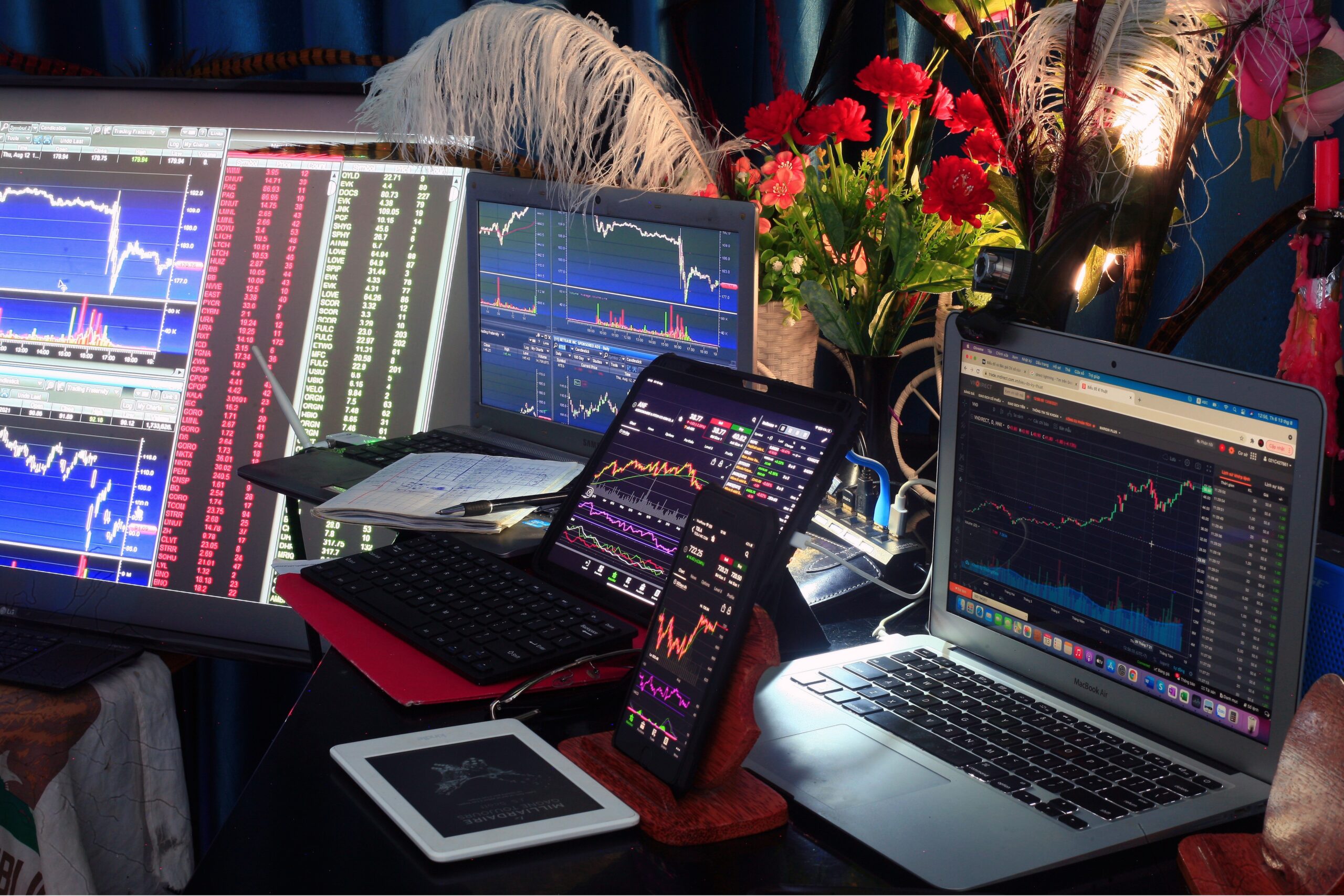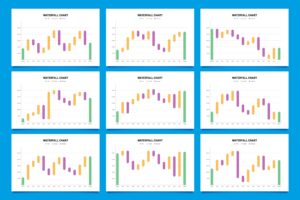If you’re into trading—whether stocks, forex, or crypto—chances are you’ve already heard about TradingView. TradingView ranks among the best charting tools, trusted by traders across the globe. The challenge is that new users often don’t explore TradingView’s complete power.
This guide gives you an easy, step-by-step approach to using TradingView confidently. By the time you finish, you’ll learn to set up your account, personalize charts, apply indicators, and backtest strategies with ease.
Let’s dive in.
Table of Contents
What Makes TradingView Popular Among Traders?
TradingView provides a web platform where traders and investors can access advanced charting features. With live market data, flexible charts, technical indicators, and a social hub, TradingView connects traders worldwide.
What makes TradingView special is:
- Accessibility – Works on web, desktop, and mobile.
- User-Friendly Design – Clean and easy for beginners, yet advanced enough for pros.
- Multi-Market Support – Covers stocks, forex, commodities, crypto, and indices.
- Community Sharing – Follow top traders and learn from shared strategies.
Simply put, TradingView goes beyond charts—it’s a complete trading ecosystem.
Also Read: Stock Market Basics
Also Read: Swing Trading
Steps You Must Know
Step 1: Start by creating and setting up your TradingView account
You’ll need an account before exploring TradingView’s powerful tools.
- Go to TradingView.com.
- Click Sign Up (you can use Google, Apple, or email).
- Pick a plan that suits you—free or paid (Pro, Pro+, Premium).
👉 If you’re just starting out, the free plan covers everything you’ll need. The platform provides real-time charts, key indicators, and a handy watchlist. You can always upgrade later.
Step 2: Understanding the TradingView Dashboard
At first login, the TradingView dashboard may seem overwhelming. Let’s simplify things so you can follow along easily:
- Search Bar (Top-Left): Look up stocks, crypto, forex pairs, or commodities.
- Watchlist (Right): Add your favorite assets for quick tracking.
- Chart Area (Center): Where the magic happens—your trading charts.
- Left Toolbar: Includes drawing tools, trendlines, Fibonacci retracement, and more essentials.
- From the top menu, add indicators such as RSI, MACD, or Moving Averages.
- Ideas & Streams (Bottom/Right): Social section where traders share setups.
Tip: Spend 10–15 minutes just clicking around to familiarize yourself.
Also Read: Intraday Trading
Step 3: Customizing Charts in TradingView
Charts are the heart of TradingView. To make them useful, customize them:
- Timeframes: From 1 minute to monthly.
- Chart Types: Candlestick (most common), bar, line, Heikin-Ashi.
- Themes: Light or dark mode depending on preference.
- Multiple Charts: You can view multiple charts side by side.
A professional trader adjusts charts to fit their style, because defaults rarely match your setup.
Step 4: Use Core Indicators
This is where beginners get excited—but also confused. Indicators help you analyze price movement.
Popular indicators include:
- Moving Average (MA): Smooths price to spot trends.
- RSI (Relative Strength Index): Measures overbought/oversold conditions.
- The MACD highlights changes in momentum, helping traders see how quickly and where prices move.
- Bollinger Bands: Helps spot volatility.
👉 Pro Tip: Don’t overload your charts. Stick to 2–3 indicators maximum. Too many signals cause confusion.
Also Read: Positional Trading
Step 5: Drawing Tools and Technical Analysis
TradingView provides drawing tools for manual technical analysis. You can:
- Draw trendlines to spot support and resistance.
- Use Fibonacci retracement to predict price pullbacks.
- Mark zones and levels with horizontal lines.
These tools let you spot trends quickly and take smarter trading actions confidently.
Also Read: Nifty Expiry
Step 6: Setting Alerts in TradingView
One of the best platform features is alerts. Trade more efficiently without needing to keep your eyes glued to charts all day.
- Right-click on the chart → Add Alert
- Set conditions like price breakouts or indicator triggers.
- Select how you want to be notified (popup, email, SMS, app notification).
This is a lifesaver. Picture receiving an alert the second Bitcoin breaks resistance, even if you’re offline.
Also Read: Colour Trading Magic
Step 7: Backtesting Strategies with TradingView
Want to know if your strategy actually works? Use the built-in Strategy Tester.
- Add a built-in strategy (like Moving Average Cross).
- Adjust parameters (fast vs slow MA).
- Test strategies with backtesting to quickly view profits, win rates, and drawdowns.
You can safely test strategies with backtesting, no real money needed.
Also Read: Famous Stock Market Terms
Step 8: With social tools, you can pick up insights straight from fellow traders.
It offers more than charts—it connects you with an active trading community.
- Check the Ideas tab → traders post chart setups with explanations.
- Follow top authors → learn from their insights.
- Share your own ideas → get feedback from experienced traders.
Engaging with others helps beginners learn quickly and dodge common mistakes.
Also Read: 10 Trading Mistakes
Step 9: Connect a Broker
Surprisingly, you can trade directly within TradingView itself.
- Go to Trading Panel (bottom of chart)
- Connect a supported broker (like OANDA, Interactive Brokers, Binance).
- Place trades without leaving the platform.
👉 This makes execution faster and more efficient.
Also Read: Stock Exchange
Step 10: Stay connected and trade on the go with TradingView’s mobile app
The mobile app is powerful (iOS & Android).
- Syncs with your desktop settings.
- Place trades, draw charts, set alerts on mobile.
- Perfect for traders who want flexibility.
This way, you can catch trading opportunities even while you’re not at your desk
Also Read: Hedging World
Also Read: Bull Market Surge
Tips to Use TradingView Like a Pro
- Keep your charts clean—too many indicators can make things confusing instead of clear.
- Use watchlists – Organize assets by category (crypto, forex, stocks).
- Set alerts smartly – Let TradingView notify you instead of watching charts 24/7.
- Follow experts – Gain inspiration from top traders in the community.
- Start with paper trading to practice safely before investing real funds.
Also Read: Sector Rotation
Pros and Cons
Pros:
- Easy to use, even for beginners
- Powerful charting tools
- Free plan available
- Large trader community
- Works across all devices
Cons:
- Some features locked behind paid plans
- Data feed delays for certain markets
- Too many community ideas can be overwhelming
Also Read: Colour Trading Mastery
FAQs
Is TradingView free to use?
A free plan is available on TradingView, giving you access to core features. Premium tiers open the door to advanced tools like unlimited indicators and custom alerts.
How Do I Add Indicators?
Can I trade directly on TradingView?
Yes, if your broker is supported, you can connect and execute trades without leaving it.
Is It Good for Beginners?
Absolutely! For newcomers, the free plan is more than enough—it’s simple and practical.
Does It Work on Mobile?
Yes, TradingView has mobile apps for iOS and Android that sync with your account.
Also Read: Trading Journal
Final Thoughts
Learning how to use TradingView might seem overwhelming at first, but once you explore its features step by step, it becomes your most powerful trading companion. From chart customization to indicators, alerts, and strategy testing, it helps traders make smarter, data-driven decisions.
If you’re serious about trading success, take time to master TradingView—because great tools, when used properly, can transform the way you trade forever.
Also Read: Risk Management







